American Center for Mongolian Studies Library
ACMS offices in Ulaanbaatar include a library comprising more than 5,000 volumes related to Mongolian Studies and academic disciplines active in the region, such as anthropology, archaeology, biology, economics, political science, and public health. The collection also contains rare books published in a variety of languages between the late nineteenth century and the present. In addition to its sizable monograph collection, ACMS has digitized the Tod Nomin Gerel Collection of sutras and manuscripts hand copied by the Oirat peoples of western Mongolia. In cooperation with other local libraries, the Center initiated the Inner Asia Digital Archive in order to provide scholars with access to primary sources and other unique research materials.
The British Library
The British Library houses an extensive Mongolian collection comprising several thousand items, including rare woodblock prints of Buddhist sutras and other religions works, Mongolian newspapers, and photographs. The c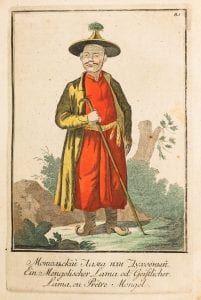 ollection spans several hundred years, but most of the materials were printed during the 20th century in the Mongolian Republic, Inner Mongolia and the Xinjiang regions of China, and the Buryat and Kalmyk Republics of Russia.
ollection spans several hundred years, but most of the materials were printed during the 20th century in the Mongolian Republic, Inner Mongolia and the Xinjiang regions of China, and the Buryat and Kalmyk Republics of Russia.
Harvard University
Harvard University holds Mongolian materials at several of its libraries. The Harvard-Yenching Library contains the Mongolian and Manchu Collection. Highlights include the Mongolian Kanjur printed in Peking in 1724, a variety of dictionaries and language manuals for Chinese and Manchu, modern scholarship published in Inner Mongolia, and Mongolian translations of the Chinese classics. The Widener Library, Harvard’s flagship library, contains nearly 6,000 Mongolia Studies titles, many in Cyrillic.
Indiana University Bloomington
Indiana University Bloomington libraries contain a variety of Mongolian Studies collections – over 6,500 items in all. The Central Eurasian Studies Collection in the Herman B Wells Library covers historical periods from antiquity to the present, including the Altaic languages and works about Mongolia. The Lilly Library houses a number of Mongolian-related manuscripts. The Sinor Research Institute for Inner Asian Studies Library consists of a general collection and approximately a half dozen special collections on the history, languages, literatures, geography, ethnicities, and religions of Central and Inner Asia, including titles related to Mongolian Studies.
Library of Congress
Library of Congress Mongolian Collection in the Asian Division comprises over 15,000 monographs, serials, microforms, and rare books. New titles published in Mongolia are added regularly. The rare book collection contains Mongolian translations of famous Buddhist sutras, works on Buddhist ritual and prayer, biographies and histories, and medical texts. The Mongolian Collection also houses complete reprint editions of both the Mongolian Kanjur and Tanjur.
National Library of Mongolia
National Library of Mongolia in Ulaanbaatar is the largest library in the country. Established in November 1921, it houses over 3 million books and other publications, including 1 million volumes considered to be rare and valuable. Highlights in the collection include historical materials in M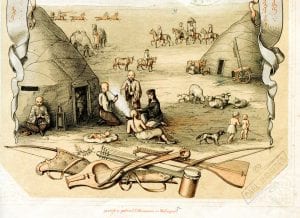 ongolian, Manchu, Tibetan, and Chinese. The library holds the world’s only surviving copy of many ancient canonic Buddhist texts, such as gold- and silver-leaf sutras from Tibet, India, and Mongolia — on display in the library’s Museum of Rare and Valuable Books. Though many of these titles are not yet cataloged, the library is likely the world’s largest repository of Tibetan Buddhist books. In September 2018 the National Library partnered with Soyombo publishing house and the Institute of History and Archeology of the Mongolia Academy of Science to publish facsimiles of the 17th-century birch-bark manuscripts from Xarbuhyn Balgas. The original manuscripts, located in the ruins of a collapsed stupa in the Bulgan Aimag region of Mongolia, contain over 2,800 life-size images related to Buddhist theology and legislation.
ongolian, Manchu, Tibetan, and Chinese. The library holds the world’s only surviving copy of many ancient canonic Buddhist texts, such as gold- and silver-leaf sutras from Tibet, India, and Mongolia — on display in the library’s Museum of Rare and Valuable Books. Though many of these titles are not yet cataloged, the library is likely the world’s largest repository of Tibetan Buddhist books. In September 2018 the National Library partnered with Soyombo publishing house and the Institute of History and Archeology of the Mongolia Academy of Science to publish facsimiles of the 17th-century birch-bark manuscripts from Xarbuhyn Balgas. The original manuscripts, located in the ruins of a collapsed stupa in the Bulgan Aimag region of Mongolia, contain over 2,800 life-size images related to Buddhist theology and legislation.
Stanford University Libraries
Stanford University Libraries houses approximately 5,000 titles related to Mongolia. The university’s Hoover Institution Library & Archives documents war, revolution, and peace in the 20th– and 21st-centuries. As it relates to Mongolia, the library and archives is particularly strong for the early Soviet era. Holdings include minutes and protocols of the Mongolian Peoples’ Party and Mongolian People’s Republic assemblies in the 1920s and 1930s as well as reports from an American visitor to Mongolia in the 1930s documenting political and economic conditions in the country. The library and archives also contain publications of the Mongolian Social Democratic Party from 1990.
University of California, Berkeley
University of California, Berkeley has a long history of collecting Mongolian mat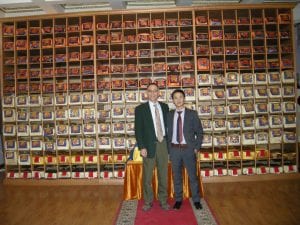 erials in its libraries. In support of its Mongolia Initiative, the C.V. Starr East Asian Library houses rare manuscripts in Mongolian, Manchu, and Chinese, including the 17th-century multi-volume work Tai sang-ni acabume karulara bithe. The Doe Library collects materials published in Cyrillic on the Mongols of the Russian Far-East and the nation of Mongolia. The collection focuses on history, culture, art, social conditions, and the environment.
erials in its libraries. In support of its Mongolia Initiative, the C.V. Starr East Asian Library houses rare manuscripts in Mongolian, Manchu, and Chinese, including the 17th-century multi-volume work Tai sang-ni acabume karulara bithe. The Doe Library collects materials published in Cyrillic on the Mongols of the Russian Far-East and the nation of Mongolia. The collection focuses on history, culture, art, social conditions, and the environment.
University of Pennsylvania
University of Pennsylvania is actively building a Mongolian Studies collection. In just a short time, Mongolian materials in the Van Pelt-Dietrich Library Center have grown significantly due to the collaborative efforts of historian Christopher Atwood and Chinese Studies Librarian Brian Vivier. Together, they have developed a collection of over 2,000 titles, including atlases, ethnographic field notes, reference books, and documents printed before 1945.
Western Washington University
Western Washington University holds one of the largest academic Mongolian Studies library collections in the world. Currently comprising over 20,000 titles and rapidly growing thanks to generous financial support from the Henry G. Schwarz and John C. (“Jack”) Street endowment funds, the collection had its origins in 1973. In that year, Professor Schwarz began acquiring books in China and Mongolia, which he then donated to the Western Libraries — a practice he continues to this day. His friend and former colleague at the University of Washington, Nicholas Poppe, donated his personal library, and other Mongolists have also contributed materials over the years.
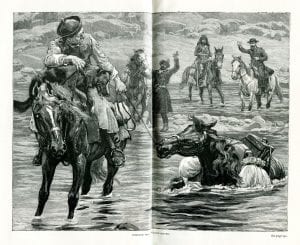
Western Libraries employs the foremost cataloger of Mongolian Studies materials. Wayne Richter is an internationally recognized expert in the creation and editing of bibliographic records for materials in Mongolian and related languages, and he routinely creates name authority records. Noted for his facility with Mongolian, Uighur, and Kazakh, Richter’s expertise includes the highly specialized area of MARC encoding non-Roman alphabet materials in online library catalogs. He helped develop national standards for the Romanization of the Mongolian script as well as the Tod-Oirat-Old Kalmyk Romanization Table. In recognition for decades-long contributions to advancing the study of Mongolia, both Professor Schwarz and Mr. Richter have received the Order of Altan Gadas (Order of the Polar Star) from the President of Mongolia.
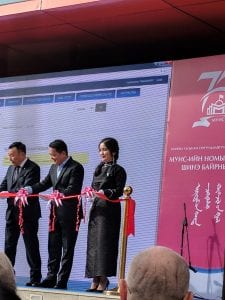
Due to the considerable efforts of Professor Schwarz, Mr. Richter, and the Western Libraries’ dedicated acquisitions staff, Western is home to a broad and balanced collection rarely found in other academic libraries. The division of the Mongolian homeland, starting in 1911, into Chinese-administered southern Mongolia and the independent republic in northern Mongolia had widespread consequences for collecting Mongolian materials. At least until the fall of the Soviet Union, many libraries held disproportionate numbers of books from one or another region of Mongolia. By contrast, Western’s library holdings are equally strong in both major parts of the Mongolian homeland, and it has an excellent collection of books on Buryatia, Kalmykia, and the Oirats of eastern Turkestan. Most other academic libraries concentrate on Mongolian language and literature, history, and some of the social sciences. Western is extremely strong in all of these fields, and it collects extensively in the natural sciences, music, and traditional medicine.